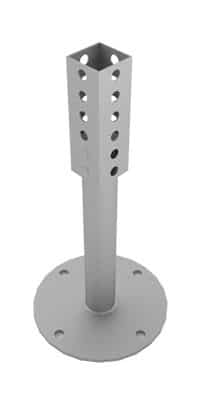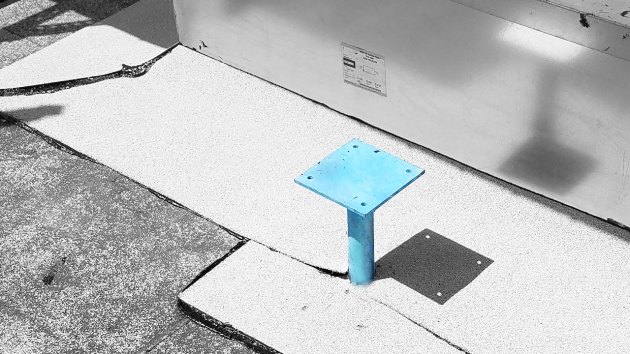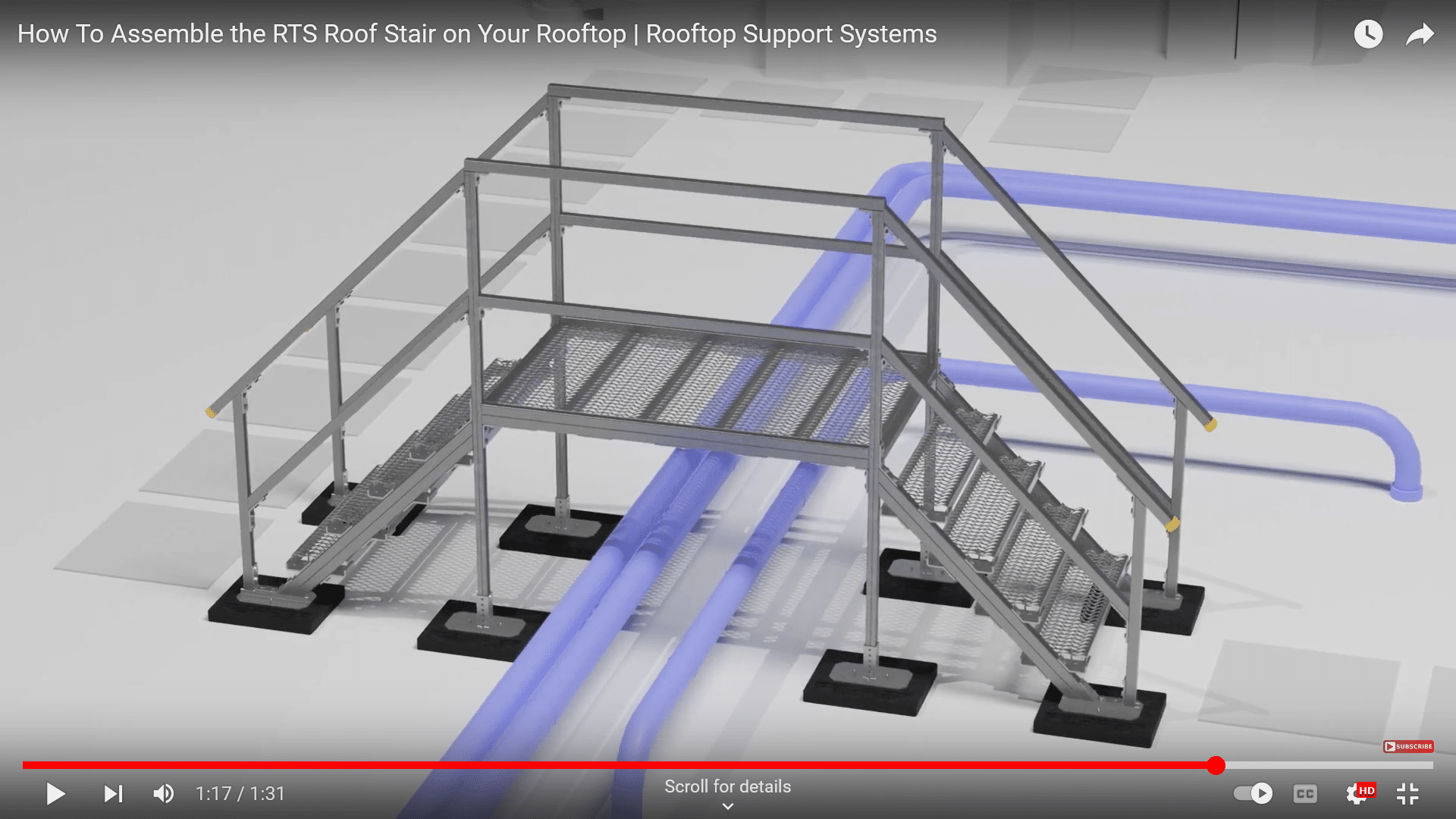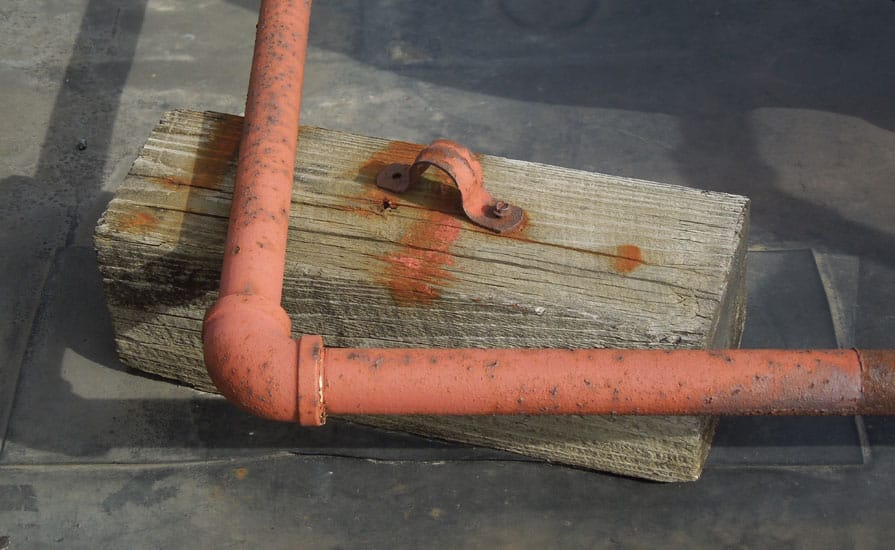Our Rooftop Support Bases Work Great with Roof Flashing

When it comes to maintaining a waterproof roof while installing rooftop equipment and roofing materials, our RTSSPB20HG and RTSSSPBWIND bases make it easy for you. Manufactured from round steel, our rooftop bases make the job of roof flashing a cinch when compared with flashing around square items.
Rooftop Support System (RTS) bases incorporate solid steel construction, rather than tubular steel, which eliminates any potential for internal leaks. RTS also offers non-roof-penetrating rubber bases that make installing rooftop equipment and roofing materials even simpler. With rubber bases, there’s no worrying about penetrating your roof and creating areas where water could potentially leak into your building.
The Importance of a Waterproof Roof
Water damage from leaks in your roof may become noticeable fairly quickly; whether from the sound of a slow drip or the formation of water stain on your ceiling tiles. But, were you aware that water can also penetrate into your walls through leakage points in your roof, causing unsafe structural damage without you even knowing? To combat this problem, contractors often use one of two methods, for waterproofing areas of your roof, where roof surfaces and equipment (such as skylights, A/C units, HVAC ducts, and plumbing vents) join together.
Method 1 – Pitch Pockets

Pitch pockets are flanged pieces of flashing material that are molded around connection points to rooftop equipment, or placed over areas of the roof that have been penetrated. These pockets are then filled with grout and a poured sealant, to create a waterproof seam. Although it’s a simple process, using pitch pockets can become a source of trouble if not properly maintained. Relying solely on the sealant to form a watertight seal is risky and the seam becomes susceptible to leakage over time due to erosion, cracking, flaking and drying. This then leads to water leaks in your roof which, as mentioned before, may not become apparent until the damage is irreversible.
Method 2 – Roof Flashing
Roof flashing involves strips of galvanized steel or aluminum, that are attached to the roof surface and the rooftop equipment connection point, to provide a safeguard around the edges where leaks can frequently cause damage. This extra protection ensures a strong seal that doesn’t require frequent maintenance and is not easily susceptible to damage from the weather.
Our RTS Division offers a wide variety of Rooftop Support products to meet all your needs and our team of skilled engineers and designers are ready to help you take your next project from concept to completion.




